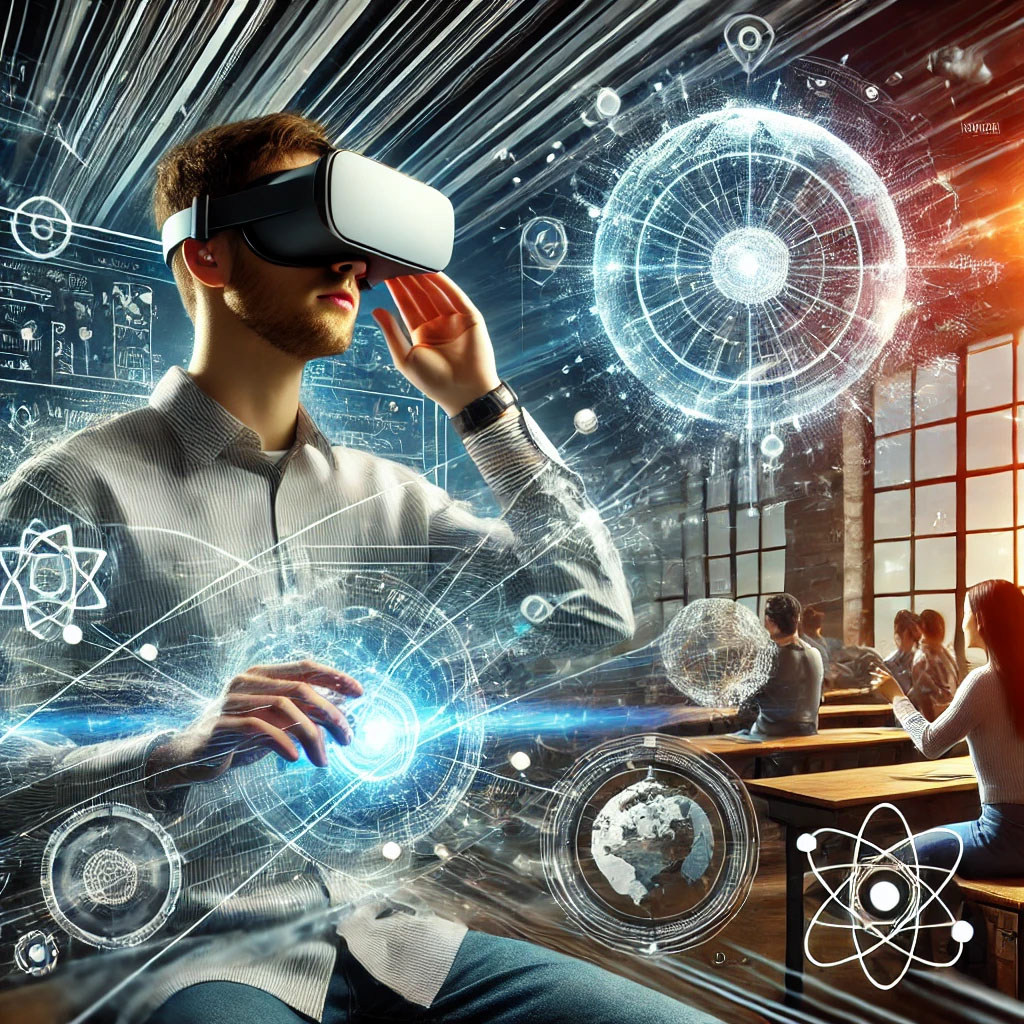Augmented Reality (AR) and Virtual Reality (VR) have made impressive strides in recent years, evolving from a niche technology category to mainstream tools like gaming devices. Though this type of technology has made changes independently, high-speed internet has played a critical role in both AR and VR’s success. As internet speeds continue to improve, they’re enabling more immersive and responsive AR and VR experiences, enhancing everything from gaming to education.
Here, we’ll explore how faster internet has helped transform AR and VR, unlocking new possibilities and creating more seamless, engaging user experiences across different sectors.
The Relationship Between Internet Speed and Immersive Technologies
Before delving into specific industries, it’s essential to understand the fundamental relationship between high-speed internet and how it can help technologies like AR and VR. Both AR and VR often require large amounts of data to create the high-quality, interactive environments we expect from these experiences. Whether it’s rendering lifelike 3D visuals or streaming video with top-grade resolution, the need for fast, reliable internet is an absolute necessity.
VR applications typically rely on low-latency, high-bandwidth connections to prevent lag or stutter. If you’re wearing a VR headset while loading and buffering images become an issue, this can break the immersive feel as well as cause uncomfortable side effects like motion sickness. AR, which overlays digital elements on actual footage, also demands a steady, high-speed connection to ensure that these elements are seamlessly integrated.
As internet speeds increase, so do the possibilities for more sophisticated AR and VR applications. Since these advanced technologies can’t run on low bandwidth, it’s crucial to have high-speed internet to make your experience the most realistic.
Gaming: A New Era of Immersive Play
One of the most prominent and well-known uses for AR and VR is in gaming. With the introduction of VR gaming platforms like Oculus Rift and PlayStation VR, players can enter fully realized virtual worlds, interacting with the environment and characters in ways never before possible. However, the experience can only be as immersive as the connection supporting it.
How Faster Internet Improves VR Gaming:
- Low Latency Interaction: Fast internet speeds drastically reduce latency, allowing players to interact with their virtual surroundings in real time without noticeable delays.
- Cloud-Based Gaming: Another major trend in the gaming world is cloud-based VR, where the rendering graphics process is handled by remote servers rather than your gaming device. High-speed internet can help the smooth streaming of these advanced games, removing the need for expensive gaming PCs and allowing more players to access high-quality VR experiences.
- Multiplayer Experiences: Fast internet speeds are essential for smooth multiplayer VR experiences, where players can game with others around the world.
As internet speeds improve, VR games can become more complex, immersive, and responsive. This is crucial for the growing demand for realism and interactivity in modern gaming.
Training: Transforming Skill Development
Beyond entertainment, AR and VR have become incredible tools in professional training. Industries like healthcare, aviation, and manufacturing currently rely on immersive technologies to train employees safely and effectively, simulating complex scenarios without the risks.
How Faster Internet Enhances Training with AR and VR:
- Realistic Simulations: In professions like medicine or aviation, high-quality simulations are crucial for training. VR and AR allow trainees to use lifelike simulations that can help mimic real scenarios. For example, pilots can train and practice flying techniques by using flight simulators.
- Remote Training: High-speed internet also supports remote training programs, where instructors and trainees can interact in virtual environments without being physically present in the same location.
- Collaboration in Training: VR and AR technologies allow for multi-user environments, meaning employees in training can interact with each other in a virtual space. Fast internet connections are essential to synchronize multiple users and ensure that everyone can see each other’s progress in real-time.
By using high-speed internet, immersive technologies offer an upgraded level of interaction and realism in professional training.
Education: Changing the Classroom
In education, AR and VR can potentially transform the way we learn by offering hands-on experiences that were once impossible in traditional classrooms. One of the most common uses of VR technology is called immersive classrooms, where high-quality images are projected onto the interior walls, creating an extraordinary virtual experience for children of all ages. Though this type of learning is undoubtedly memorable and valuable, it requires reliable, fast internet connections for seamless engagement.
How Faster Internet Enhances Educational Experiences:
- Access to Educational Content: As educational content becomes more interactive, data-heavy, and visually rich, faster internet is key to delivering these resources without interruptions. Virtual field trips, for example, are increasingly common, allowing students to see remote locations or historical events from the comfort of their classroom.
- Collaboration and Remote Learning: High-speed internet is particularly important for remote education, a trend that has accelerated since COVID-19 began. With faster internet, students can engage in collaborative VR and AR lessons instantly, interacting with their peers and teachers from anywhere.
- Accessibility: For students with disabilities, AR and VR offer a range of educational benefits, from virtual field trips to multisensory learning. High-speed internet ensures that virtual experiences and knowledge are accessible for all children, no matter their disability.
In education, faster internet speeds not only help the delivery of high-quality content but also the dynamic, interactive nature of virtual learning tools.
The Future of VR and AR
As internet infrastructure continues to improve, we can expect AR and VR to become even more integrated into our everyday lives. Faster internet can help drive innovations that push the boundaries of what’s possible in gaming, education, and the workforce. Whether it’s virtual reality becoming a more viable tool for educators or immersive AR applications changing the way we shop, the impact of high-speed internet on these technologies is everchanging.
With high-speed internet, the use of VR is becoming more accessible for students, employees, and gamers across the world, connecting people virtually and improving our educational capacities.
